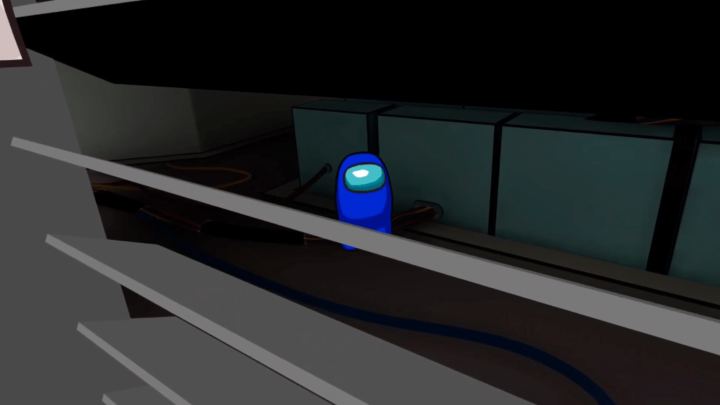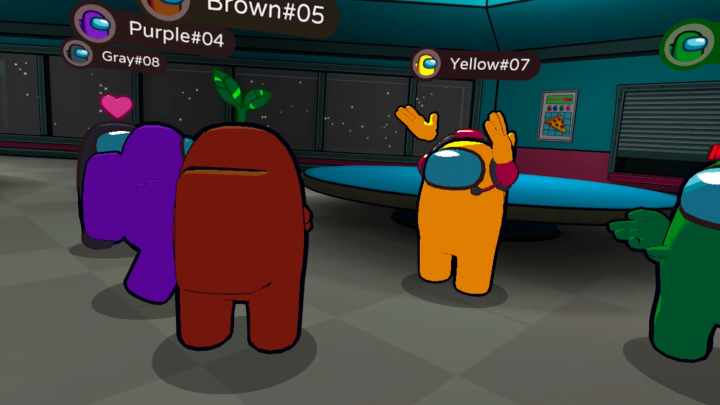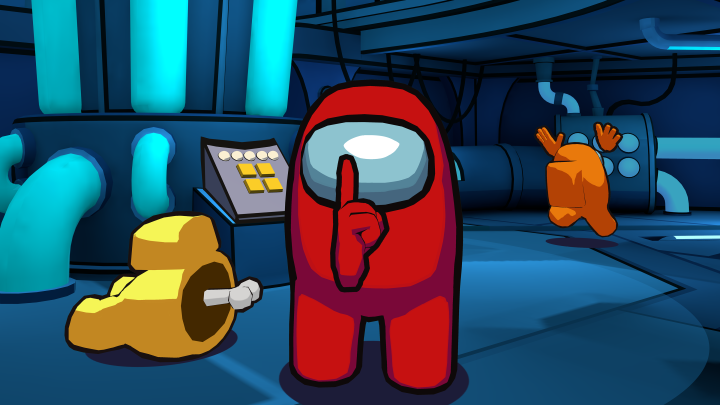
Few games can claim to be a success story on the same level as Among Us. When the tiny indie game released in 2018, there was virtually no fanfare around it or extensive press coverage. Its story drastically changed, however, in 2020 as the Covid-19 pandemic had people looking for new ways to connect. The quirky (and inexpensive) social deduction game was the perfect way to get a bunch of friends together for a fun time in digital space.
Since then, developer Innersloth has been pushing the game’s momentum as far as it can go, keeping it in the news cycle with updates, cross-game collaborations, and more. However, it’s about to have its biggest moment thanks to Among Us VR, a brand-new version of the game that’s only playable in — you guessed it — VR.
After spending just an hour with it, I can confidently say that Among Us VR is the best version of the game. The physicality it brings is just enough to reinvent the simple game, forcing players to think about their body language as much as their ability to lie. The catch is that you’ll have to find enough friends with VR headsets to enjoy it, which is no easy task.
Nothing sus here
Among Us VR fundamentally works the exact same way as the original game. Players are tossed into a ship and given a list of simple tasks to complete. A few players are secretly imposters, who can climb into vents, sabotage parts of the ship, and kill innocent crewmates. Nothing here changes that core loop, which is for the best considering how elegant the original game is.
The VR version’s changes are more a matter of perspective, but that makes a big difference. The game ditches its overhead camera for a first-person viewpoint, which makes the entire experience much more paranoia-inducing. Since I’m no longer able to see a bird’s-eye view of the room I’m in, I find myself more surprised when I round a corner and bump into another crewmate. That ratchets up the tension, as there’s a lot more cautious hovering around another player in fear that you’re about to be murdered. Hallway chases with an overeager killer become significantly scarier, as it really feels like you’re sprinting away from a movie monster shouting for help.

The added physicality creates much more of the nuance that I always felt was missing from the comparatively stiff standard edition. When I’m focused on a task, my back is usually to the door of any given room. With the perspective shift, that means I can physically turn my head to peek over my shoulder and make sure no one is creeping up behind me while I’m stuck waiting for my task to complete. It’s far more nerve-racking than just watching my little bean stand in-place from above.
My favorite change, though, comes during emergency meetings. When someone calls together a meeting in the regular game, players are dropped into a voting menu that they can talk over. Here, they’re actually assembled into the ship’s cafeteria where they can walk around and chat, voting by clicking a screen in the center of the room. That led to some uproariously funny results in my game. When I made a credible accusation against an alleged imposter, everyone crowded around them in a circle as they struggled to talk their way out of it. Body language plays a surprisingly fun role in the proceedings, too, as VR controls (I was on a Meta Quest 2) allow you to see players nervously fiddling with their hands during a meeting.

Tasks have naturally changed, too, giving players more tactile chores. During my playthrough, I’d need to play whack-a-mole in the Medbay, complete a game of Simon Says in the Reactor, and run from room to room pulling levers. Each task is pretty simple (only one I played required any sort of challenge), but that works in the context of VR. The focus is more on straightforward tasks that’ll keep your back vulnerable for just enough time. During the Simon Says minigame, for instance, I need to keep my eyes focused on the pattern I need to replicate. If I turn to look at the door, it might set me back.
The catch
While I love just about everything about Among Us VR more than the regular version, there’s a massive caveat: You’ll need enough friends with VR headsets to enjoy it. That tech restriction is only notable because the game was largely able to rise in popularity because of how easily accessible it was to any player. Anyone could grab it on their phone for just a few dollars and that made it the right game for the social isolation moment.

Among Us VR finds itself in a polar opposite situation. I’m not sure if I have seven friends who own VR headsets, let alone three. I imagine that many players are in a similar situation, which puts the social game in a tough position. One could always jump into random matches with strangers, but Among Us is undoubtedly at its best with close pals (granted, I still had an absolute blast playing with other press members).
It’s an awkward situation for such an excellently designed multiplayer game to find itself in, as it’s a far more situational experience. I want to recommend it as strongly as possible, but Among Us’ success has always been more about who is playing than the game itself. Among Us VR offers the ideal version of the deduction title, but it’s going to be a much lonelier one, too. I can only hope more consumer-friendly devices like the PlayStation VR2 can help turn the tech into a household staple so I can force my friends to play with me.
Among Us VR launches on November 10.
Editors’ Recommendations


